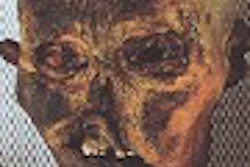TORONTO - While the World Health Organization contemplates lifting the travel advisory on SARS-stricken Toronto, Canadian health officials are already expressing confidence that they’ve seen the worst of the outbreak of severe acute respiratory syndrome. But the region’s health system -- including hard-pressed imaging departments at local hospitals -- faces the monumental task of getting back to normal.
"The mood is very good, because there’s a sense of pride that we’ve made it," said Dr. Patrice Bret, radiologist in chief at the University Health Network (UHN) and Mount Sinai Hospital, Toronto’s largest teaching institution. Monday was the first day since the outbreak that staff only had to wear masks in clinical areas -- another sign that the outbreak may be waning, according to Bret.
While the number of deaths from SARS in the Toronto area now stands at 21 -- and that number may climb because five patients remain in critical condition -- officials said Monday that fewer than 40 people are still being treated for the disease. Even more encouraging, there hasn’t been a new case of SARS since April 14.
"I’m very optimistic," Dr. Mark Prieditis told AuntMinnie.com. "It looks as if we’ve turned the corner." Prieditis is chief of imaging for the Rouge Valley Health System, and executive vice president of the Ontario Association of Radiologists.
But both Bret and Prieditis concurred that, while the panic may be over, contending with the aftermath of SARS is still an issue. Overall, Bret said there are three main problems:
- While hospitals are beginning to return to normal, strict screening makes it hard for patients to get into hospitals for appointments.
- New infection-control measures are cutting into productivity.
- Some patients are simply not showing up for their appointments because the SARS outbreak has been closely linked to the healthcare system.
For imaging departments, and healthcare centers in particular, the SARS outbreak has their once-efficient systems moving at the speed of slow-pouring maple syrup.
"We used to have 1,500 outpatients a day in our (imaging) facilities," Bret said. But the strict post-SARS entry procedures -- patients are screened by special staff and enter the facility through a single entrance -- means that they are trickling in, seriously cutting into workflow, he added.
In order to meet new infection-control rules, time has been added to pre-exam preparation, which is resulting in too much scanner downtime. "It used to take 20 minutes to do a CT, and now it takes 20 minutes, plus 20 minutes to clean the room," Bret said. "The efficiency of every modality is very much down."
Some patients are simply skipping out on their appointments, particularly after the WHO issued its travel advisory. "We’re certainly seeing some of that," Prieditis said. "We’re going to have to have some sort of public education campaign (to overcome the fear)."
Finally, the SARS crisis is expected to have a huge financial impact, Bret said. Under Canada’s single-payor system, the government pays physicians on a fee-for-service basis. But the SARS-related backlog means that exams have yet to be performed, and radiologists have yet to be paid.
"For the past four weeks we have been doing only emergency and some urgent cases. For a while we weren’t even doing cancer cases," Bret said, estimating that UHN and Mount Sinai combined may be behind on more than 5,000 patients.
Prieditis noted that his practice includes Scarborough Grace Hospital, the center of the SARS outbreak. "Scarborough Grace has been shut down for the past four weeks and my work is down 25%-40%," he said. "Physicians are in a risky environment, not only in terms of health, but also financially."
Indeed, the Ontario Medical Association has estimated that the direct cost of SARS to the Canadian healthcare system overall will exceed $100 million Canadian ($69 million U.S.).
By Michael SmithAuntMinnie.com contributing writer
April 29, 2003
Related Reading
ISMRM calls off Toronto gathering, April 24, 2003
U.S., Canadian experts team up to fight SARS, April 23, 2003
Toronto SARS outbreak throws routine imaging into turmoil, April 18, 2003
U.S. health workers seek better SARS protection, April 17, 2003
Guideline advises on management of SARS, April 9, 2003
SARS prompts cancellation of major oncology meeting in Toronto, April 3, 2003
Copyright © 2003 AuntMinnie.com


















